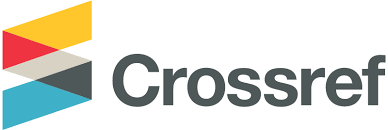The Analysis of Violation Maxim to Create Adult Humor in Amphibia Animated TV Series (2019)
 ), Fitrawati Fitrawati(2),
), Fitrawati Fitrawati(2), (1) Universitas Negeri Padang
(2) Universitas Negeri Padang
 Corresponding Author
Corresponding Author
Copyright (c) 2024 Muhammad Gagah Reforman
DOI : https://doi.org/10.24036/ell.v13i3.125045
Full Text:
 Language : en
Language : en
Abstract
In the US animation industry, there is an increasing trend of incorporating adult humor into children's entertainment. This research investigates how adult humor is created by violating Grice's cooperative principles (maxims) in Amphibia animated series. The research is analyzed by identifying the type of violating maxim and how each violated maxim co-occurs with rhetorical techniques using Grice's cooperative principle theory (1975) with Tupan and Natalia's violating maxim criteria (2008) and Berger's humor techniques (1993, 1997). This research found that violating the maxim of quality is the most common way to make adult humor at 28.26%, followed by violating the maxim of manner at 15.22% and relation at 10.87%. However, other types of maxim violations were below 10%. The dominant type of rhetorical technique used in Amphibia involves irony/sarcasm, with 28.26%. Exaggeration is the second most common type, with 19.57%. While absurdity and ridicule each with 17.39%. Nevertheless, the rest of the rhetorical techniques were below 10%. These findings conclude that violating the maxim can lead to indirectness and leads to unconventional methods of communication. Adults tend to understand this better than children, who often take things literally. Additionally, the characters in Amphibia violate multiple maxims simultaneously, possibly to appeal to an adult audience. The show also uses difficult rhetorical techniques for children to grasp, such as irony/sarcasm, exaggeration, absurdity, and ridicule.
Keywords
References
Amianna, J., N., R., P., & Putranti, A.. (2017). Humorous Situations Created by Violations and Floutings of
Conversational Maxims in a Situation Comedy Entitled How I Met Your Mother. Journal of Language and Literature (JOLL).
Agus, C., & Yustiani, K. P. (2020). The Non-Observance Of Grice's Cooperative Principle And Humorous Implicature In Barack Obama's Interview. CULTURA FRANCA: Journal of English Linguistics, Literature and Culture, 1(1), 1-14.
Akers, C. L. (2013). The Rise of Humor: Hollywood Increases Adult Centered Humor in Animated Children's Films. Brigham Young University.
Al-Zubeiry, H. Y. (2020). Violation of Grice's maxims and humorous implicatures in the Arabic comedy Madraset Al-Mushaghbeen. Dil Ve Dilbilimi Çalışmaları Dergisi, 16(2), 1043–1057.
Ariadini, P. P. (2020). The Analysis of Illocutionary Act and Humor Technique by Mak Beti in Arif Muhammad YouTube Channel. UPI Repository.
Autio, T. (2021). "I'm so ticked off that I'm moulting!": analysing humour in Disney animations. (Master's thesis, University of Jyväskylä).
Bell, D. C., & Cox, M. L. (2015). Social Norms: Do We Love Norms Too Much?. Journal of family theory & review, 7(1), 28–46.
Berger, A. A. (1993). An anatomy of humor. Transaction Publishers.
Cunningham, A. J. (2004, May 21). Children's humor. Scarlett, 93–109.
Firmansyah, M. W., & Ariyanti, L. (2021). Adult Jokes in Sausage Party Movie: A Study of Multimodality. Prosodi, 15(2), 140-149.
Glenwright, M., & Pexman, P. M. (2010). Development of children's ability to distinguish sarcasm and verbal irony. Journal of Child Language, 37(2), 429-451.
Goel, V., & Dolan, R. J. (2007). Social regulation of affective experience of humor. Journal of cognitive neuroscience, 19(9), 1574-1580.
Grice, Paul (1975). "Logic and conversation". In Cole, P.; Morgan, J. (eds.). Syntax.
Habib, K., & Soliman, T. (2015). Cartoons' effect in changing children mental response and behavior. Open Journal of Social Sciences, 3(09), 248
Harida, R. (2018). Analysis of Humor Making Techniques in the WIT Comedy Program (Waktu Indonesia Timur). International Journal of Education, Information Technology, and Others, 1(2), 78-85.
Krisdwiyani, I., & Hanidar, S. (2022). The Production of Conversational Humor by Flouting Gricean Maxims in the Sitcom The IT Crowd. Lexicon, 9(1), 11.
Morreall, John (ed.) (1986). The Philosophy of Laughter and Humor. State University of New York Press.
Romadlani, M. M. I. (2021). A Manipulation of Semantic Meanings as a Humor Construction Strategy. Language Circle: Journal of Language and Literature, 15(2), 293–304.
Rochmawati, D. (2017). Pragmatic and rhetorical strategies in the English-written jokes. Indonesian Journal of Applied Linguistics, 7(1), 149-159.
Sah, M. I., Saher, N. (2019). A Critical Discourse Analysis of Rhetorical Devices Used in Advertisements of Beauty Products in Pakistani Print Media. New Media and Mass Communication.
Stenius, T. H., Karlsson, L., & Sivenius, A. (2022). Young children's humour in play and moments of everyday life in ECEC centres. Scandinavian Journal of Educational Research, 66(3), 396-410.
Tupan, A. H., & Natalia, H. (2008). The multiple violations of conversational maxims in lying done by the characters in some episodes of Desperate Housewives. K@ Ta Lama, 10(1), 63–78.
Wananda, S. N. A. (2021). A Linguistic Analysis of Verbal Humor Found in the Transcription of Animated TV Series Gravity Falls. VELES (Voices of English Language Education Society), 5(2), 143-155.
 Article Metrics
Article Metrics
 Abstract Views : 20 times
Abstract Views : 20 times
 PDF Downloaded : 8 times
PDF Downloaded : 8 times
Refbacks
- There are currently no refbacks.
Copyright (c) 2024 Muhammad Gagah Reforman

This work is licensed under a Creative Commons Attribution-NonCommercial 4.0 International License.












